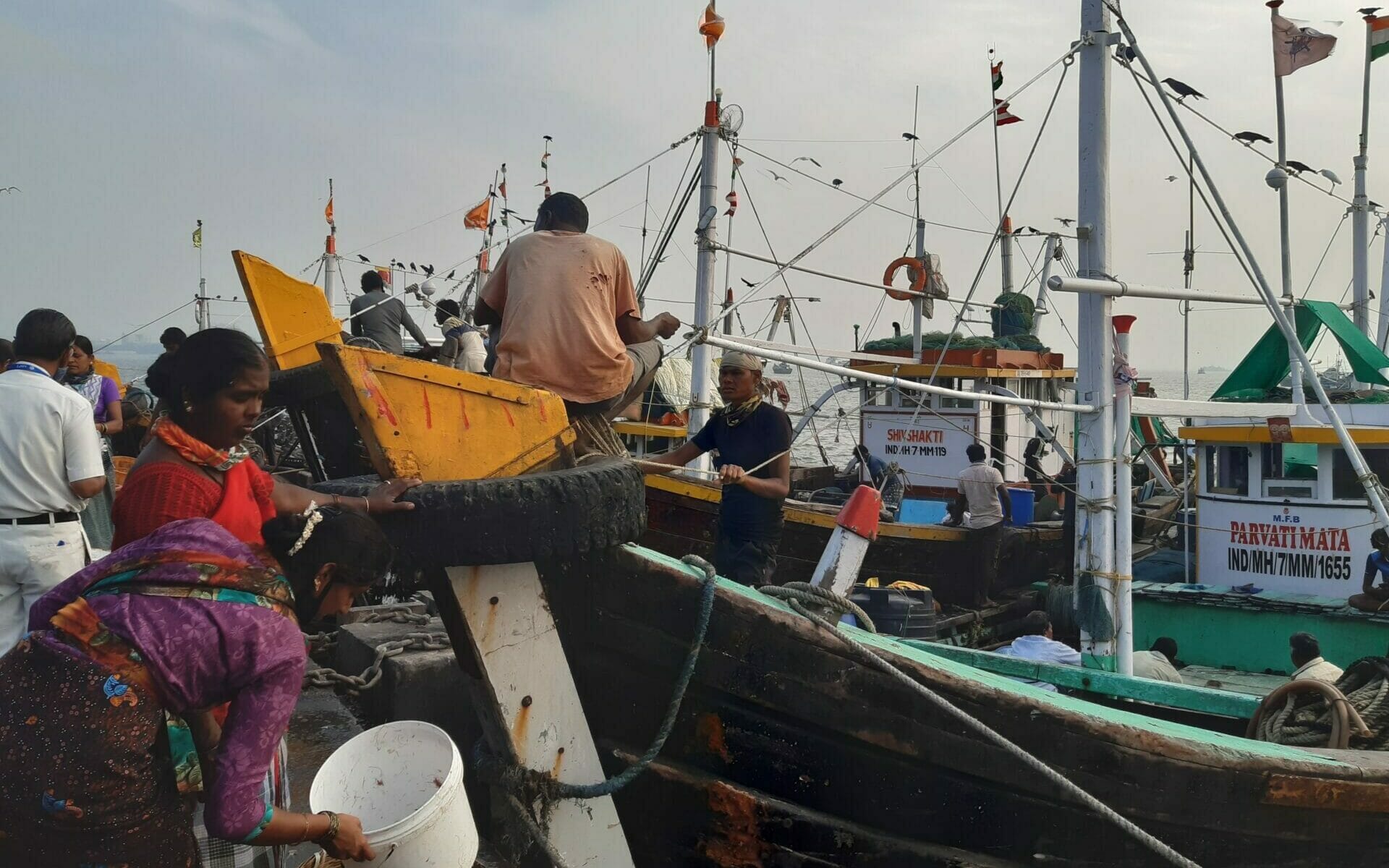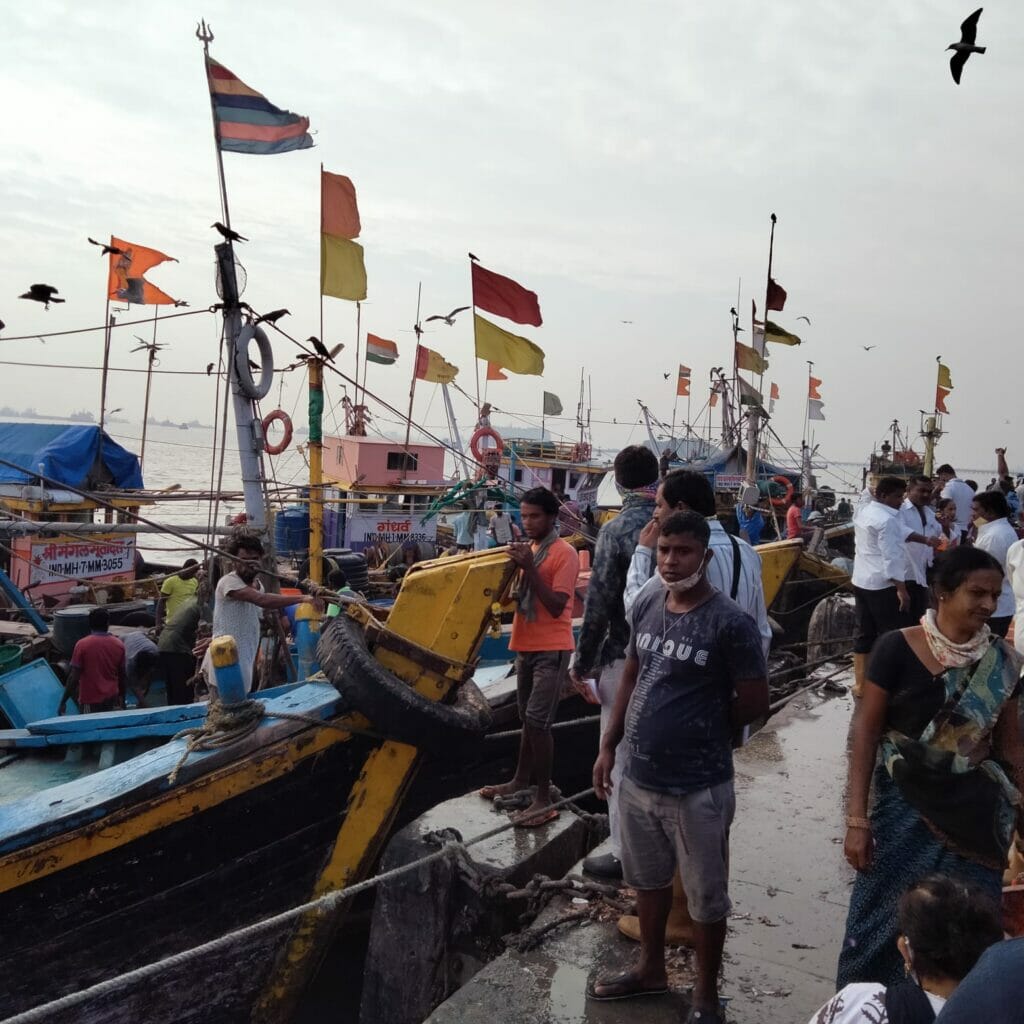Bhaucha Dhakka or Ferry Wharf, located on the eastern seafront of the city, is one of Mumbai’s oldest fish landing sites. It is one of the four major sites, where fish is brought to the town.
Over the last few years, the dhakka has seen immense changes. A grimy billboard inscribed with the title ‘Sagarmala-Port-led prosperity’ stands at the side of the current trestle that leads to both the jetty and the newly constructed cruise and ferry terminal. This trestle will soon be demolished.
Bhaucha Dhakka handles both small boats and trawlers. As claimed by the Environment Impact Assessment (EIA) of the project, the current handling capacity of the dhakka is 300 boats. This results in a lot of congestion and overcrowding.
The Mumbai Port Trust (MPT), which owns the land of ferry wharf, has proposed the construction of a new approach trestle and the expansion of the existing fish jetty. The work is all set to begin, after monsoons this year. It is claimed that the project is a long-standing demand from the local fishermen, as the current wharf is now congested.
The proposed expansion comes under the ‘Pradhan Mantri Matsya Sampada Yojana’ and the funds for the same have been sanctioned by the central government.
The expansion, proposes to expand handling to 1300 boats.
The redeveloped jetty proposes to have two air-conditioned auction halls, a net mending shed, a conveyor belt to transfer the fish directly to the parked vehicles, and security to restrict access, amongst many others. It does seem like a lucrative deal for the fishers working at the dhakka.
Lack of transparency and public consultation
Nandkumar Pawar, president of Small Scale Fishworkers Union and head of Sagarshakti remarks, “There are hardly any fisherfolk, who are aware of this project. We are not sure if it will benefit small traditional fish vendors.”
The only two documents in the public domain are the EIA and the minutes of the mandatory public hearing. Reports claimed that the expansion will benefit 20,000 people involved in various fishing activities.

The objective of the public hearing is to make locals aware of the project and take into account suggestions and objections. It mentions that ‘locals’ were part of the hearing. However, it does not mention if local fishermen and women were part of the hearing. Attendees included the secretary of a Merchant Association at Ferry Wharf and a couple of residents, not directly involved in fishing. There is no evidence of representation from the community.
The EIA reflects regular consultation carried out by the project proponent with the local fishermen. It does not mention the number or the livelihoods of the people interviewed. Neither does it give precise statistical results of the responses.
Read More: Fisherfolk of Hanuman Koliwada struggle without land or livelihood
What does it mean for fishers?
The market environment at ferry wharf is complex. It is a competitive blend of Gujarati Koli boats, Maharashtrian Koli boats, trawlers of different sizes, and small boats. There is an active network of suppliers and dealers (businessmen), who buy fish directly from the boats. This fish is then packed and exported or sent to other states.
A lot of middlemen are involved in packing and transporting the fish from the jetty to the trucks, peeling and sorting fish, etc. The businessmen also sell fish to vendors, who then sell it in different parts of the city (third-party vendors). There is also a group of vendors, mostly women, who buy fish directly from the boats and sell it at the jetty.

Adge Bhimane, a third-party vendor, mentioned, “We have not been informed about the proposed redevelopment.” He is a migrant from Andra Pradesh.
A woman vendor, who sits at the jetty every day, was not aware of the proposed plan either.
A police official, who wished to remain anonymous, and who happened to visit the jetty explained, “The project was discussed with the merchant association, suppliers, and dealers. The fishers at the jetty would not know about it.”
The EIA mentions that there will be ‘access control by means of security and establishing compound wall’. It alludes to the complete mechanisation of the fisheries at the wharf.
Nandkumar says it could be exclusionary to the traditional fishing community.
“Our fish markets are located at prime locations such as Chhatrapati Shivaji Maharaj mandai, Bhaucha Dhakka, Sassoon Docks, Marol Dry fish market etc. It is an invasion and systemic elimination of traditional fishing communities from our age-old trade of fish selling”.